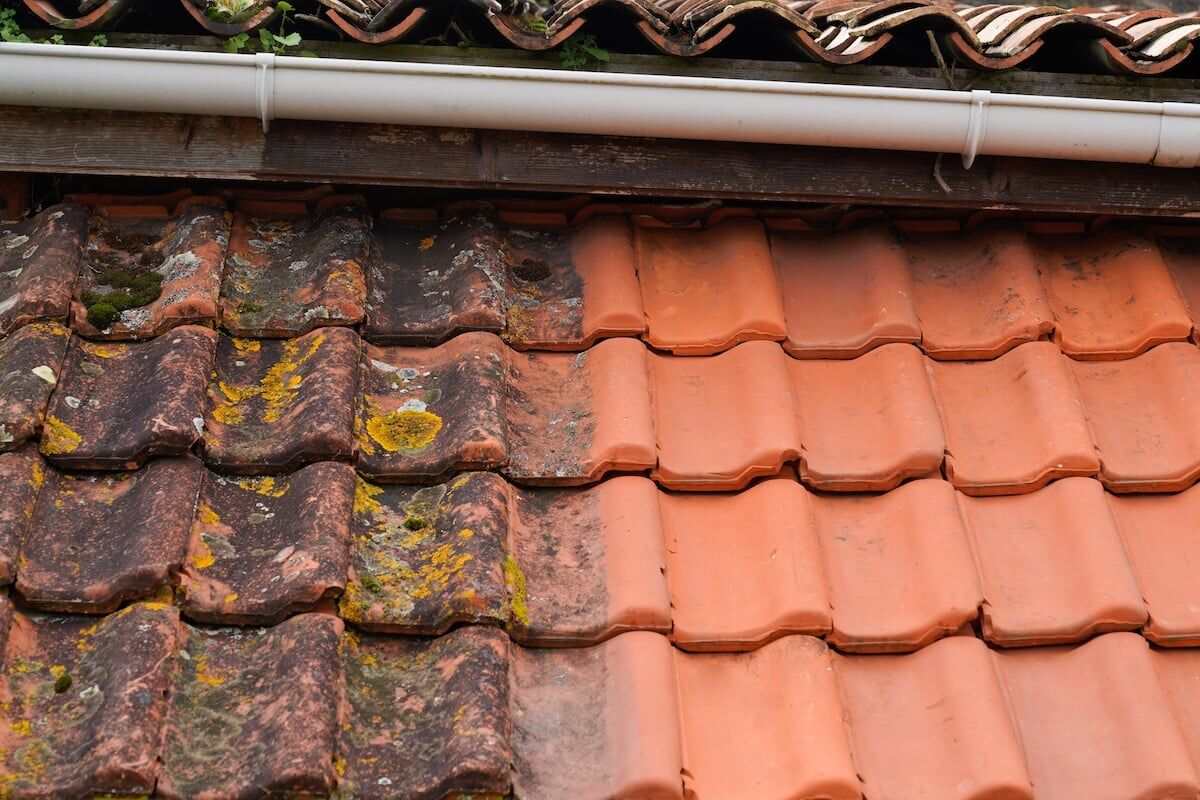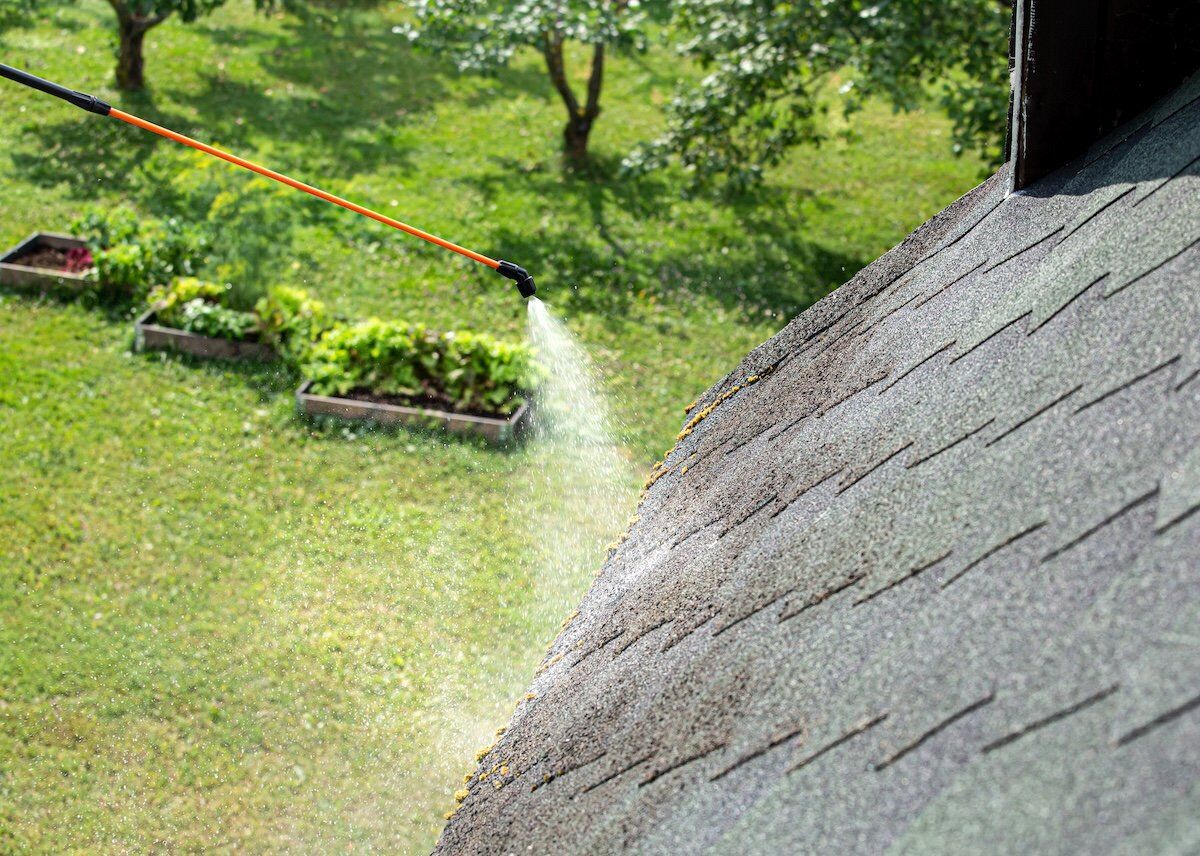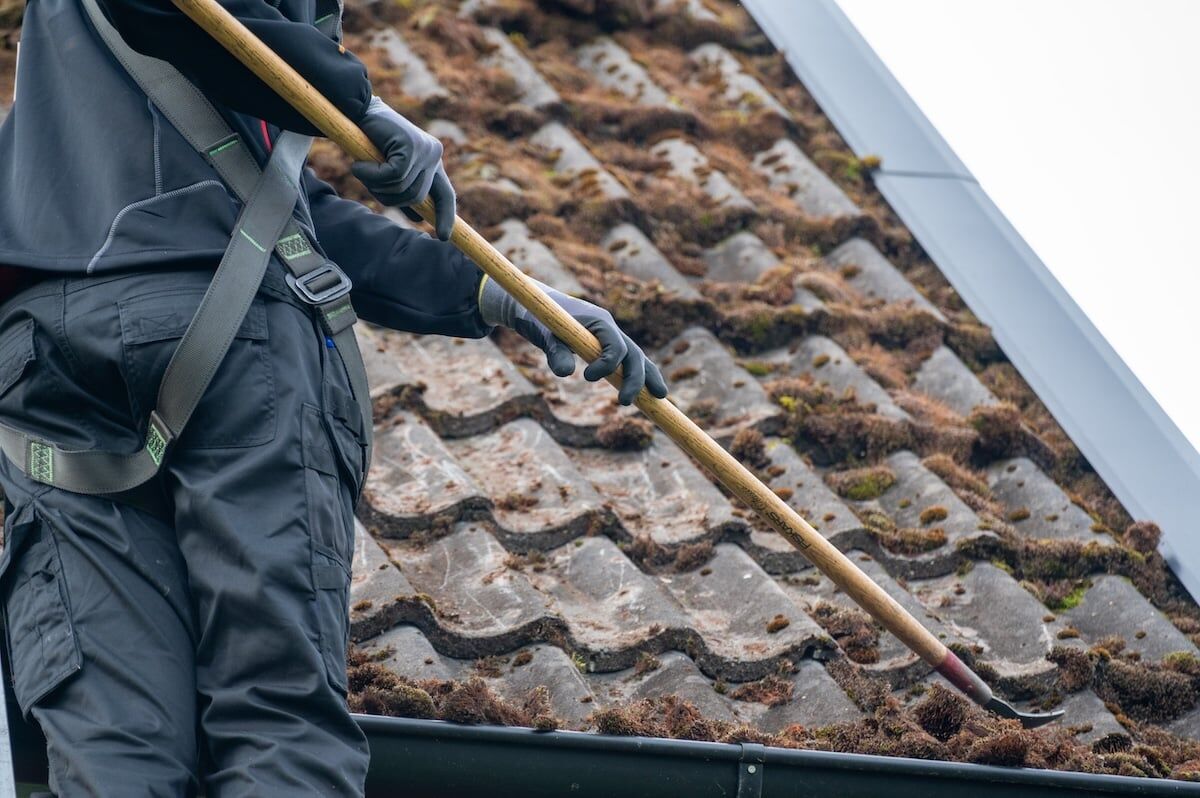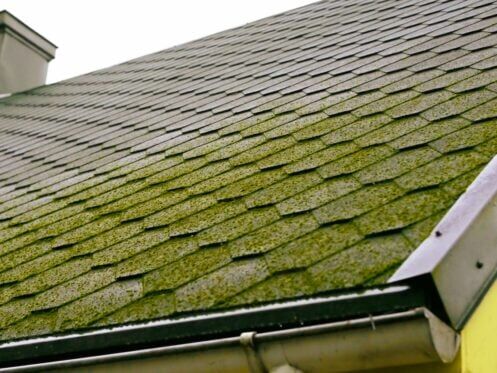Finding moss on roof shingles is more than just an eyesore—it can cause long-term damage if left untreated. Moss thrives in damp, shaded areas and gradually lifts shingles, traps moisture, and accelerates roof deterioration. Whether you’re dealing with an active moss problem or want to prevent future moss growth, understanding the right approach is key to protecting your roof’s longevity.
- Roof health: Moss buildup leads to trapped moisture, leaks, and structural damage.
- Safety risks: Moss can make your roof slippery and hazardous to walk on.
- Prevention tips: Regular maintenance helps stop moss before it spreads.
In this blog, we’ll break down how to remove moss from roof surfaces, how to prevent it, and when to call in a professional.
🌱 Why Moss Grows on Roofs
Moss is a small, non-vascular plant that spreads through spores. On roofs, it commonly appears as green or dark patches and thrives in shaded, moist environments.

Common Conditions That Lead to Moss Growth
- Tree cover: Roofs shaded by overhanging branches receive less sunlight, staying damp longer.
- Humid climates: Regions with high humidity or frequent rain are ideal for moss development.
- Poor drainage: Clogged gutters or flat spots on the roof create standing water.
- North-facing slopes: These areas get less sun exposure, making them prime real estate for moss.
Once moss establishes itself, it grows quickly and can damage roofing material if not addressed.
👍 Why Removing Roof Moss Matters
Ignoring a moss covered roof may seem harmless at first, but the long-term effects can be expensive and damaging.
Risks of Moss Buildup
- Shingle damage: Moss grows under shingle edges, lifting and loosening them.
- Trapped moisture: Moisture retention accelerates rot and decay in decking materials.
- Leak potential: Weakened shingles increase the chance of water intrusion.
- Pest attraction: Damp, decaying roof materials attract insects and rodents.
- Warranty issues: Many roofing warranties are voided by moss-related damage.
Proactive moss removal protects your investment and extends your roof’s lifespan.
🏠 How to Remove Moss from Roofing Materials: Step-by-Step
If you see patches of moss on your roof, follow this safe and effective process to remove it without causing damage.
1. Choose a Dry Day
- Aim for a dry, overcast day—preferably with no rain in the forecast. Wet moss is slippery, and sunlight can dry out cleaning agents too quickly.
2. Protect Landscaping
- Cover nearby plants with plastic sheets or tarps before cleaning to protect them from runoff and chemicals.
3. Use a Gentle Cleaning Solution
- Mix 50% water and 50% household bleach (or use a store-bought moss remover).
- Avoid harsh chemicals like ammonia or vinegar, which can damage shingles.
4. Apply the Solution Safely
- Use a garden sprayer to coat mossy areas. Start at the top and work your way down.
- Let the solution sit for 15–30 minutes—don’t let it dry completely.
5. Rinse Carefully
- Use a low-pressure garden hose to rinse off the moss and cleaner.
- Avoid pressure washers, which can strip granules and damage shingles.
6. Gently Remove Loose Moss on Roof
- Use a soft-bristled brush or broom to remove remaining moss.
- Brush downwards, following the direction of the shingles to avoid lifting them.
- Be sure to remove all dead and dried moss as well.

⭐️ What Not to Do
When removing roof moss, it’s important to avoid common mistakes that could harm your roof more than help it.
Mistakes to Avoid
- Using a pressure washer: High pressure can dislodge shingles and void warranties.
- Scrubbing with metal tools: Wire brushes or abrasive pads can wear down shingle surfaces.
- Working alone without safety gear: Roof cleaning is risky—always use safety harnesses or hire a pro.
- Ignoring runoff management: Cleaning chemicals can damage landscaping or flow into storm drains.
🧽 Best Products for Moss Removal
Choosing the right product helps eliminate roof moss while keeping your shingles intact.
Top Control Options for a Moss-Free Roof
- Wet & Forget Outdoor Cleaner: Easy to apply and doesn’t require rinsing.
- Spray & Forget Roof Cleaner: Effective on moss, mold, and algae.
- Zinc sulfate or copper sulfate: Natural mineral treatments that inhibit moss regrowth.
- Bleach and water (1:1): Budget-friendly DIY option but must be applied carefully.
Always follow manufacturer instructions and test a small area first.
✅ 5 Ways to Prevent Moss Growth on Your Roof
Prevention is easier (and safer) than frequent moss removal. These strategies keep your roof clean and moss-free:
- Trim Overhanging Branches: More sunlight reduces damp, shaded areas where moss thrives.
- Clean Gutters Regularly: Proper drainage keeps water from pooling on roof edges.
- Install Zinc or Copper Strips: These metals release ions that naturally kill moss as rainwater flows across them.
- Schedule Annual Roof Inspections: Early detection of moss or other issues can save money.
- Keep Roof Surfaces Clear: Remove leaves, branches, and debris after storms to prevent moisture buildup.
Moss prevention requires consistency, but it’s much easier than repeated cleanings or repairs.

📞 When to Call a Professional
Sometimes it’s safer and more effective to leave roof moss removal to a licensed roofing contractor—especially if your roof is steep, tall, or in poor condition.
Signs You Should Hire an Expert
- Extensive moss coverage: Large patches may need specialized treatment.
- Steep or multi-story roofs: Climbing and cleaning can be dangerous without the right gear.
- Roof damage or leaks: Professionals can inspect and repair damage caused by moss.
- Uncertain materials: If you’re unsure of your roof’s age or type, a pro can clean it safely without causing harm.
Professionals not only remove moss effectively but also check for related issues like soft decking or compromised flashing.
🛠️ Does Moss Damage Warrant a Full Roof Replacement?
Not always—but in some cases, long-term roof moss growth can do enough damage that replacement is the most practical solution. If asphalt shingles are warped, waterlogged, or structurally compromised, a full replacement may be necessary.
Moss-Related Replacement Triggers
- Persistent leaks despite patching
- Widespread rot or mold under shingles
- Shingle granule loss and lifting across large sections
- Shortened lifespan due to years of moss buildup
A qualified roofing company can help you decide between targeted repairs and a complete re-roofing solution.
🏠 Protect Your Roof with Regular Moss Removal & Prevention
Spotting moss growth on roof shingles might seem minor, but it can have serious consequences over time. The good news? With the right tools and prevention strategies, you can safely remove moss and keep your roof in excellent condition for years to come.
At Indy Roof & Restoration, we specialize in roof inspections, moss treatment, and preventative maintenance. Whether you’re dealing with light moss buildup or a more serious infestation, we’ll provide expert care and honest advice you can trust.
Don’t let moss ruin your roof. Contact Indy Roof & Restoration today and protect your home the right way.

